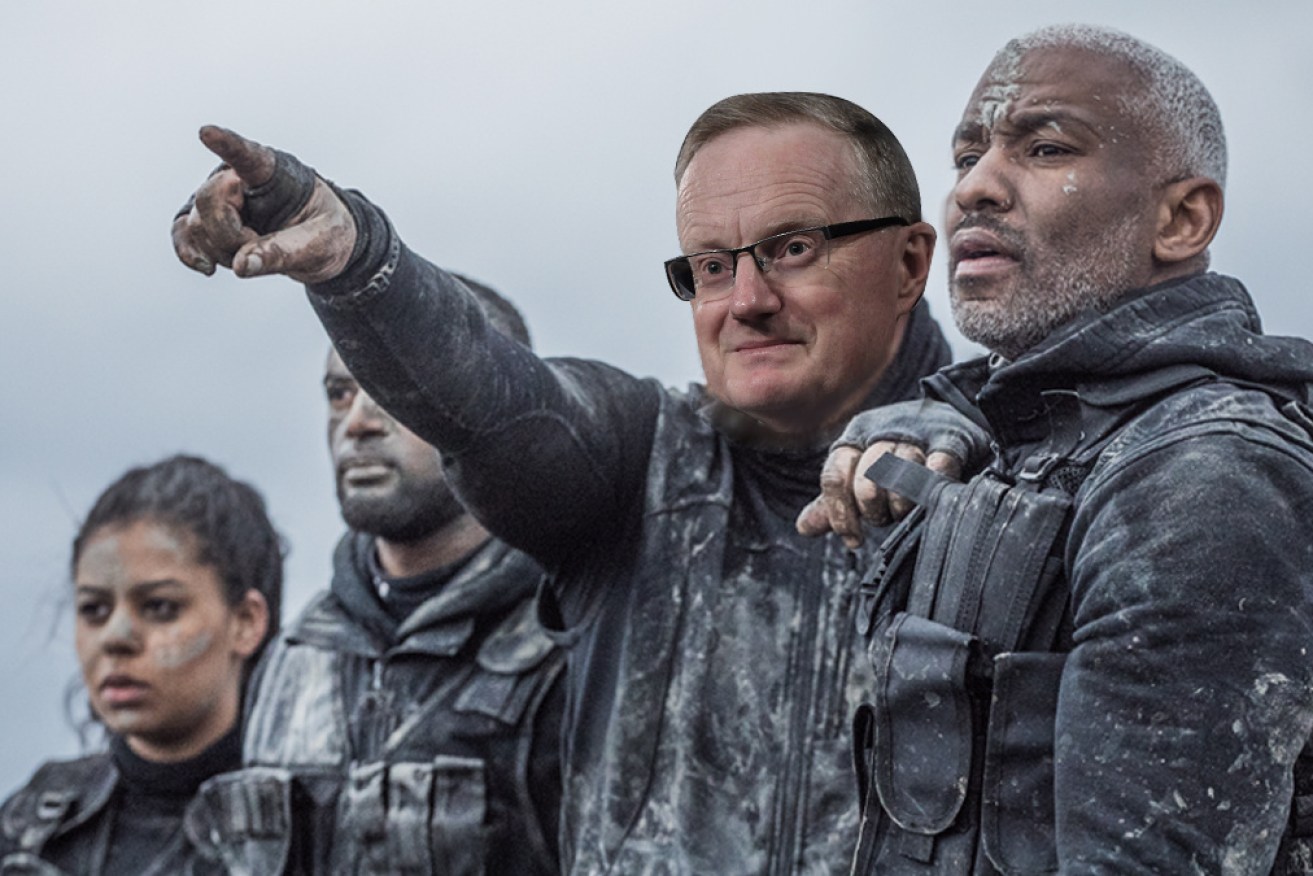RBA calls in the big guns to fight the war on recession


RBA chief Philip Lowe has embraced a new economic weapon. Photo: The New Daily
The Reserve Bank of Australia has stepped into the trenches to defend the economy from a major downturn, with governor Philip Lowe saying the bank was about to launch a quantitative easing (QE) program.
His admission came as the stockmarket plunged a massive 9.7 per cent, pushing the ASX index to 5120 points – 30 per cent lower than its record high on February 20.
The market lost more than $150 billion in value in what was the largest one-day fall since the great crash of 1987.
Shares were hit hard across the board, with infrastructure stocks and other defensive shares such as Sydney Airport (down 17.3 per cent) and Transurban (down 16.2 per cent) taking big losses.
“That means the selloff is gradually becoming indiscriminate,” said Roger Montgomery, principal of Montgomery Investment Management.
“The defensive stocks are catching up.”
Big Four clobbered
The Big Four banks lost between 10 and 12.5 per cent, medical sector high flyer Cochlear lost 19.25 per cent, and Wesfarmers lost 5.8 per cent.
The overall market fell back to where it was in 2016, wiping out four years of profits for investors.
Dr Lowe has repeatedly flagged the possibility of exploring QE when interest rates reach the bank’s “effective lower bound” of 0.25 per cent.
And, on Monday, he all but confirmed the bank would explore it sooner rather than later.
Dr Lowe said in a statement that the bank “stands ready to purchase Australian government bonds in the secondary market to support the smooth functioning of that market, which is a key pricing benchmark for the Australian financial system”.
BIS Oxford Economics chief economist Sarah Hunter said “that’s quantitative easing”.
“Conditions are moving very quickly and the outlook has weakened since Friday,” Dr Hunter said.
The RBA board is also expected to cut rates from 0.5 per cent to 0.25 per cent in an emergency meeting on Thursday, while Prime Minister Scott Morrison has raised the possibility of further stimulus after last week’s $17.6 billion move.
It’s a global move
The RBA’s announcement came after the US Federal Reserve slashed interest rates by 1 per cent to almost zero and launched a new $US700 billion QE program.
Fed Reserve chair Jerome Powell moved on Sunday night (US time) instead of waiting till a scheduled meeting on Wednesday.
The RBA did more than presage QE, too.
It threw almost $15 billion at the “repo” market, which kept banks lending over the past two days.
Independent economist Saul Eslake said that was unusual.
“We don’t really have a repo market like the European and US economies,” Mr Eslake said.
“The fact that they are doing that shows the RBA is putting out the message that it will do what it has to do to keep the financial system functioning.”
The repo market allows banks to borrow back the money they lend to the government to maintain liquidity.
Central banks across the globe also took precipitous action.
The Reserve Bank of New Zealand slashed rates by 0.75 per cent to 0.25 per cent after PM Jacinda Ardern described the situation as unprecedented and Air New Zealand said it would close down 80 per cent of its flight capacity.
The European Central Bank held interest rates at zero and boosted its QE program, while the Bank of England joined an international move to ensure bank liquidity.
Trade economist Tim Harcourt said the Australian exports had held up relatively well in the face of the outbreak.
“Through all this coal and iron ore have still been going to Wuhan. Crops and rocks have done OK, but [services and advisory services] haven’t,” Mr Harcourt said.
“I think it will take six months to a year for the economy to bounce back.
“One of the lessons will be not to become too dependent on one country as a source of supply like China.
“People will look to diversify.”
The limits of monetary policy
Wesley Widmaier, a political economist at the Australian National University, said the moves by central banks showed “we have reached the limitations of monetary policy”.
“This is a supply crisis and we need action like that taken after the great crash [1929],” Dr Widmaier said.
That action would involve public funding of big projects and “governments taking a lead and doing things the private sector should but cannot do in the current environment”.
“Cutting rates and boosting liquid assets is not enough,” Dr Widmaier said.
Meanwhile, David Knox, partner with superannuation consultancy Mercer, said the situation was “unprecedented” and that “some members had been calling funds to switch to cash”.
“It is crazy to do that now because you crystallise losses,” Mr Knox said.
“Even if you need the money, now is not the time to switch.”








